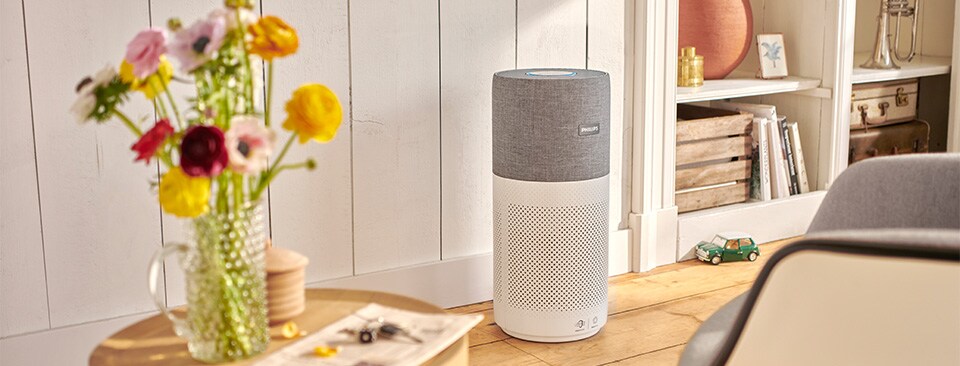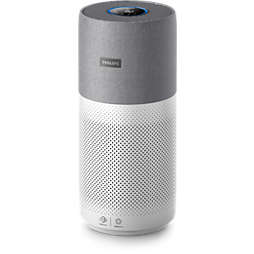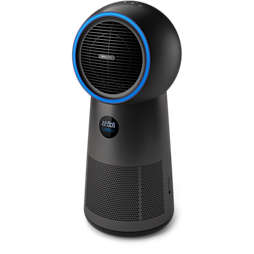Reading Time: 5 Min
How to improve air quality
Did you know that the average adult takes 24,000 breaths every day? Inevitably, some of that air we breathe contains pollutants and isn’t as clean as it could be. Fortunately, we can regulate the air quality in our own homes. Have a look at our tips below to ensure you and your family breathe the clean air you deserve!
What causes bad air quality, and why is good air quality important?

Bad air quality is caused by particles and gasses that are suspended in the air. Cars, factories, dust, mold, and mildew, but also perfumes, hairspray, cooking and cleaning products can contribute to poor air quality. When we breathe polluted air, some of the pollutants find their way into our lungs. From there they can enter the bloodstream and cause severe health problems, especially for people who are vulnerable to respiratory pollutants. The good news is that awareness of air pollution and the importance of clean air for public health is growing - and so is the body of research on the subject. Based on that research, we’ve created a list of measures you can take to improve the air quality in your home!
How can you improve indoor air quality?

The process of improving air quality is twofold: we must reduce the source of contamination and improve ventilation at the same time. We recommend focusing on both aspects to achieve the best result. 1. Eliminate smoke, dust, mold and dampness Keep your home as free of pollutants as possible. Vacuum, mop and dust regularly. Ask visitors to smoke outside and fix any mold or dampness issues. Hang laundry outdoors to dry as much as possible and keep the shower fan on for 30 minutes after you’ve showered (or keep a window open). 2. Cook smart: use cooking vents and use the back burner Cooking on gas is a polluting activity in itself, so make sure to use cooking vents or keep the windows open when you’re cooking. Using the back burners and covering your pots will improve air quality as well. The same holds true for cooking on electric stoves, as they produce the same pollutants, at lower levels. 3. Keep rugs, carpets and floors clean Rugs and carpets are more than just a good-looking addition to your home. They are also (very stylish) low-level air filters, trapping dust and other particles in their many fibers. Clean them weekly and they will continue to work for you! Not a fan of rugs and carpets? Our vacuum cleaners, like the cordless Philips SpeedPro Max, ensure thorough cleaning results on all floors. 4. Buy plants that improve air quality – but take care of them Buying indoor plants to improve air quality is a great idea. Small plants like ferns and lilies and larger palm trees are the best options to pull contaminants out of the air4. Be careful, though. If you do not dust them regularly and make sure they have a pot that suits them, they can collect dust or go moldy. So, show them some love!. 5. Open windows as much as possible The easiest and possibly most obvious measure you can take to improve the air quality of your home: open your windows. Of course, this depends on the air quality of the area you live in, but keeping your windows open will improve the indoor air quality and freshen up your home in most cases. 6. Filter the air with an air purifier or humidifier Our specialized air purifier and air humidifiers, like Series 3000i, are a great addition to any home. They circulate air in a room and remove at least 99,97%* of allergens, harmful gases and particle matter like pollen, pet dander and mold spores. Bacteria and viruses, like colds or the flu are also filtered from the air. As an additional benefit, they also maintain healthy humidity levels. Make sure to change the filters regularly for optimal performance. *From the air that passes through the filter, tested on the filter media for 1 pass efficiency at 5.33cm/s air flow, by a third party lab.
Related products
- £550.00*
3000i Series Air Purifier and Humidifier
AC3829/60
- Purifies rooms up to 80 m²
- 310 m³/h clean air rate (CADR)
- 600 ml/h humidification rate
- Connected with CleanHome+ app
- £450.00*
3000i Series Air Purifier for XL Rooms
AC3033/30
- Purifies rooms up to 135 m²
- 520 m³/h clean air rate (CADR)
- HEPA & Active Carbon filter
- Connected with Air+ app
- £399.00*
2000 Series 3-in-1 Purifier, Fan and Heater
AMF220
- Purifies rooms up to 42 m²
- 165 m³/h clean air rate (CADR)
- HEPA and Active Carbon filters







